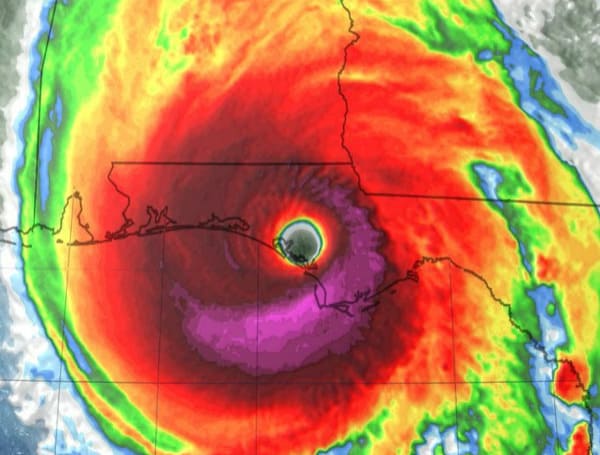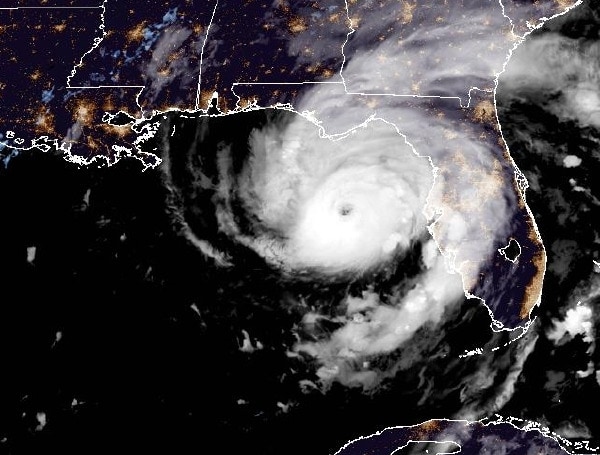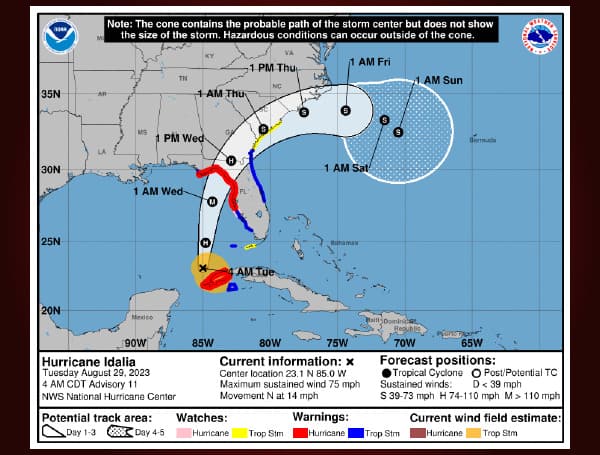As the sun rises on another hurricane season in Florida, it’s crucial for residents to be proactive in their preparations. The state’s vulnerability to these powerful storms is well-documented, with a long history of devastating impacts that have tested the resilience of communities across the region.
However, with the right mindset and a strategic plan in place, Floridians can minimize the risks and emerge stronger in the face of these formidable natural challenges.
In this comprehensive guide, we’ll dive deep into the essential elements of hurricane preparedness, equipping you with the knowledge and tools necessary to safeguard your family, property, and community.
From understanding the unique risks posed by hurricanes to developing a personalized action plan, this article will serve as your roadmap to navigating the unpredictable waters of the Atlantic hurricane season.
Florida’s geographical location and climate make it a prime target for hurricanes, with the state’s coastline and inland regions facing a variety of hazards.
The potential for destruction is ever-present, from powerful winds that can rip apart structures to devastating storm surges that inundate low-lying areas. Additionally, the state’s susceptibility to flooding, tornadoes, and other secondary effects of these storms further compound the challenges faced by residents.
Understanding the specific risks associated with your location is crucial. Factors such as proximity to the coast, elevation, and the structural integrity of your home all play a role in determining your vulnerability.
By familiarizing yourself with these factors, you can make informed decisions about evacuation protocols, reinforcing your property and ensuring the safety of your loved ones.
Preparing Before the Season Begins
As the old adage goes, “an ounce of prevention is worth a pound of cure.” When it comes to hurricane preparedness, the time to act is long before the first storm of the season forms.
This pre-season period offers a valuable window of opportunity to get your affairs in order and ensure that you are ready to weather the impending challenges.
Assembling Your Disaster Supply Kit
One of the cornerstones of hurricane preparedness is the creation of a comprehensive disaster supply kit. This kit should contain a diverse array of essential items, from non-perishable food and water to essential medications and important documents.
Read: Essentials For Florida Hurricane Season: Building A Comprehensive Preparedness Kit
By taking the time to carefully curate and stock your kit, you can ensure that you and your family are self-sufficient in the event of a prolonged power outage or disruption to essential services.
Reinforcing Your Home
Your home is your sanctuary, and it’s crucial to take the necessary steps to fortify it against the ravages of a hurricane.
This may involve upgrading windows and doors, securing roof connections, and ensuring that your property is equipped with the appropriate hurricane shutters or impact-resistant glass.
Additionally, trimming trees and clearing debris from your yard can help mitigate the risk of damage from flying objects.
Developing a Communication Plan
In the chaos of a hurricane, clear and effective communication can be the difference between safety and peril.
Establish a communication plan with your loved ones, designating a central point of contact and determining alternative methods of reaching each other in the event of power or cellular network disruptions.
This can include identifying out-of-state family members or friends who can serve as a hub for information sharing.
Understanding Forecast Information
As the hurricane season approaches, staying informed about the latest forecast information becomes paramount. The National Hurricane Center (NHC) and local meteorologists play a vital role in providing up-to-date information on the development, trajectory, and intensity of storms.
By familiarizing yourself with the various hurricane-related terminology and the interpretation of forecast models, you can make more informed decisions about your safety and the appropriate course of action.
Interpreting Hurricane Watches and Warnings
One of the critical pieces of information to understand is the distinction between hurricane watches and warnings.
A hurricane watch indicates the possibility of a hurricane occurring within a specific area, while a hurricane warning signifies that hurricane conditions are expected within a certain timeframe.
Knowing the difference between these two alerts can help you determine the appropriate response, whether that’s finalizing your preparations or initiating an evacuation.
Staying Informed with Multiple Channels
In the digital age, there are numerous channels through which you can stay informed about the latest hurricane developments. From traditional media sources like television and radio to online platforms and mobile apps, it’s essential to have a diverse array of information sources at your fingertips.
Additionally, consider investing in a battery-operated or hand-crank weather radio to ensure you can receive critical updates even during power outages.
Responding to a Hurricane Threat
When a hurricane threat becomes imminent, it’s time to put your preparedness plan into action. This phase of the process requires swift and decisive decision-making, as the safety of you and your loved ones hangs in the balance.
Heeding Evacuation Orders
One of the most critical decisions you’ll face is whether to evacuate your home. When local authorities issue mandatory evacuation orders, it’s crucial to heed their advice and leave the area as soon as possible.
Prepare your home, gather your disaster supply kit, and follow the designated evacuation routes to reach a safer location. Remember, the priority is to get yourself and your family to safety, even if it means leaving your property behind.
Sheltering in Place
In some instances, evacuating may not be a viable option, either due to time constraints or personal circumstances. In these cases, you may need to shelter in place within your home.
Ensure that your home is properly secured, stock up on essential supplies, and be prepared to hunker down for the duration of the storm. Stay informed about the storm’s progress and be ready to take immediate action if conditions deteriorate.
Protecting Vulnerable Populations
Special consideration must be given to individuals with access and functional needs, such as the elderly, individuals with disabilities, and those with medical conditions.
Ensure that these vulnerable populations have a comprehensive plan in place, including transportation arrangements and access to appropriate shelters or medical facilities. Collaborate with local authorities and community organizations to provide the necessary support and resources.
Weathering the Storm
As the hurricane makes landfall and the winds begin to howl, it’s crucial to remain vigilant and adhere to the safety protocols you’ve established.
This phase of the hurricane experience can be the most harrowing, but by maintaining a calm and disciplined approach, you can increase your chances of emerging unscathed.
Staying Safe During the Storm
During the height of the hurricane, it’s essential to stay indoors, away from windows, and in a secure, interior room of your home.
Monitor the storm’s progress through your trusted information sources, and be prepared to take immediate action if conditions deteriorate. Avoid venturing out until local authorities have declared the area safe, as the aftermath of a hurricane can be just as dangerous as the storm itself.
Addressing Power Outages
Power outages are a common occurrence during and after a hurricane, and it’s crucial to be prepared for extended periods without electricity. Ensure that your disaster supply kit includes flashlights, batteries, and a portable power source, such as a generator or power bank.
Additionally, be mindful of the potential risks associated with alternative power sources, such as carbon monoxide poisoning from generators or the proper use of candles.
Navigating Flood Conditions
Flooding is one of the most significant threats posed by hurricanes, and it’s essential to be aware of the risks and take appropriate action.
If your home is located in a flood-prone area, be prepared to evacuate quickly and seek higher ground. Avoid attempting to drive or walk through floodwaters, as they can conceal hazards and pose a serious risk to your safety.
Recovering and Rebuilding
The aftermath of a hurricane can be a daunting and overwhelming experience, but with the right mindset and support, communities can emerge stronger and more resilient than ever before.
The recovery and rebuilding process requires a coordinated effort among individuals, local authorities, and state and federal agencies.
Assessing Damage and Seeking Assistance
Once the storm has passed and it’s safe to venture outside, carefully assess the damage to your property and report any significant issues to the appropriate authorities.
Be aware of the resources available, such as disaster relief programs and insurance claims, and take the necessary steps to begin the recovery process.
Navigating the Insurance Landscape
Navigating the insurance claims process can be a complex and often frustrating experience, but it’s a crucial step in the recovery process.
Familiarize yourself with your policy coverage, document the damage thoroughly, and work closely with your insurance provider to ensure a fair and timely resolution.
Building Resilience for the Future
As you rebuild and recover, it’s essential to incorporate resilience-building measures into your long-term plans.
This may involve investing in more robust construction materials, exploring renewable energy sources, or implementing flood mitigation strategies.
By taking a proactive approach, you can safeguard your home and community against future hurricane threats.
Fostering Community Resilience
Hurricane preparedness is not just an individual endeavor – it’s a collective responsibility that requires the active participation of the entire community.
By fostering a culture of preparedness and collaboration, we can enhance the resilience of our neighborhoods and ensure that no one is left behind in the face of these natural disasters.
Engaging with Local Authorities
Establishing a strong partnership with local authorities, such as emergency management agencies and first responders, is crucial for effective hurricane preparedness.
Stay informed about their emergency plans, volunteer opportunities, and community outreach initiatives, and be an active participant in the process.
Strengthening Neighborhood Networks
Cultivating strong neighborhood networks can be a powerful tool in the face of a hurricane.
Encourage your neighbors to work together in developing emergency plans, sharing resources, and looking out for vulnerable members of the community.
By fostering a sense of community, you can create a support system that extends beyond the individual household.
Educating and Empowering the Next Generation
The success of hurricane preparedness efforts relies on the active engagement and participation of future generations.
Invest in educational initiatives that teach children and young adults about the importance of disaster preparedness, the science behind hurricanes, and the steps they can take to protect themselves and their families.
Help support the Tampa Free Press by making any small donation by clicking here.
Android Users, Click To Download The Tampa Free Press App And Never Miss A Story. Follow Us On Facebook and Twitter. Sign up for our free newsletter.



